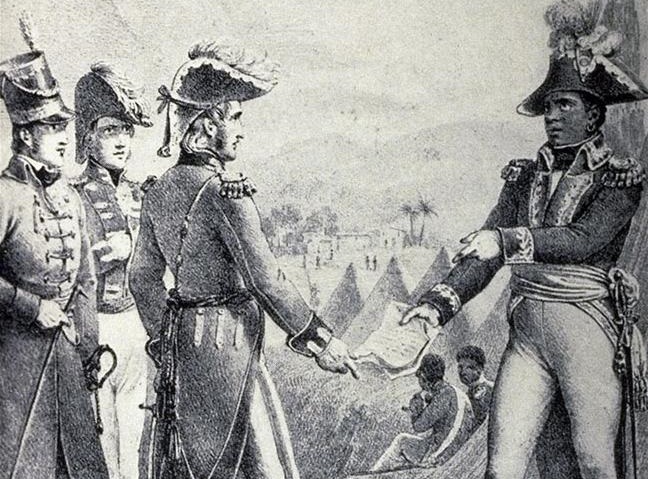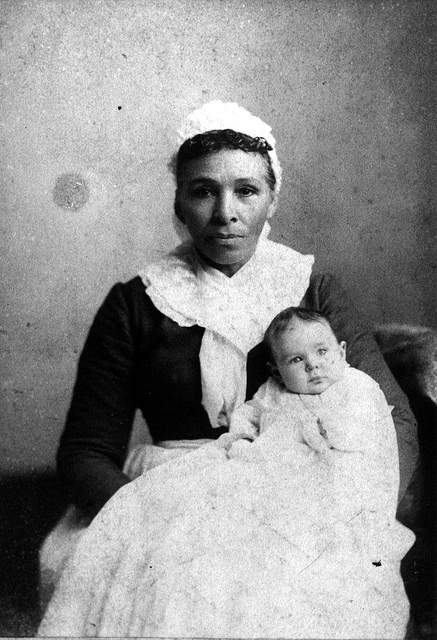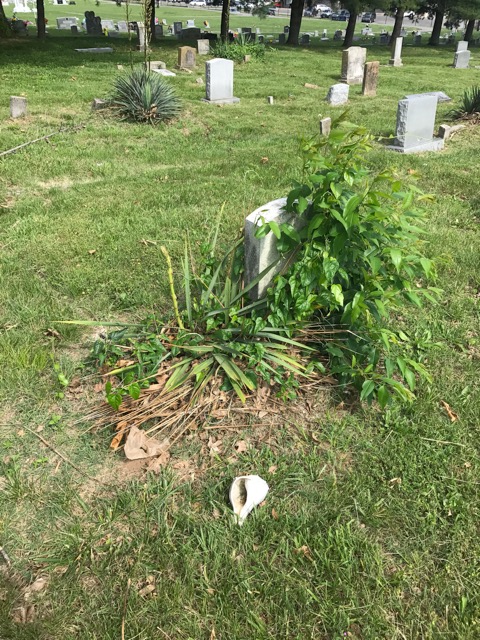Finding Toussaint L’Ouverture in Tennessee

In the summer of 1777, as musket balls flew about New York’s battlefields, José de Gálvez felt confident. The American Revolution had unsettled the entire Atlantic World, raising new questions for the Minister of the Indies. But, amid the uncertainty of international war, he, the man charged with not only reforming but also strengthening the Spanish Empire, thought he had the right answers.
So, less than a year later, ships began leaving the Canary Islands bound for New Orleans. The packetboats and frigates and polacres that arrived just before Spain declared war against Great Britain held more than 1,600 passengers, immigrants who Gálvez expected would populate Spanish Louisiana and bolster its defenses. Some Isleños, the bachelors especially, became soldiers. Other colonists, particularly the artisans, stayed in New Orleans. Most including the married men and their families moved to the settlements of Galveztown, San Bernardo, Terre-aux-Bouefs, and Valenzuela. In those places, they defined, sought and sometimes found prosperity in the same way as the Anglo-Americans who won their independence in 1783.
On September 17, 1798, Tomás de Villanueva y Barroso, an Isleño planter who made his home in San Bernardo, sold for the equivalent of $1,000 an enslaved criolla woman named Chalinete and her daughter. The daughter’s name went unrecorded. One year later, just after he signed a petition asking the governor to destroy the cimarrón communities east of New Orleans, Barroso sold for approximately $438 another enslaved girl born in Louisiana. Her name, Maria, was recorded. But she was alone. So was Catalina, an enslaved criolla woman who Barroso sold for about $1,313 in November 1801.1 By that time, Barroso was the comandante of Valenzuela. Within a few months, in recognition of “his work in keeping law and order within [Louisiana],” he became the owner of more than 4,000 acres of rich, fertile land on Bayou Terrebonne.
Mariah Reddick knew that land and the men who hoped to master it. She knew them intimately. Painfully. Generations later, the afterlives and aftershocks of the revolutionary age that birthed them lingered. They shaped Reddick’s experiences of freedom and unfreedom, life and death.

If the American Revolution birthed the United States and Bayou Terrebonne, the Haitian Revolution re-shaped it. Ten years after the latter led to the Louisiana Purchase and the western expansion of U.S. slavery, Tomás de Villanueva y Barroso sold to Pierre Denis De La Ronde the acreage that he had won for his service to Spain. De la Ronde, a Louisiana-born veteran of Spain’s campaigns against British West Florida from 1777-1781 and the War of 1812, had nine daughters including AdélaÏde Adèle de la Ronde. She eventually married Pierre Adolphe Ducros, a planter from New Orleans who developed the de la Ronde land and gave it its name. The Ducros Plantation next passed into the hands of Thomas Butler. Butler was one of the thousands of Anglo-Americans who flooded into the Louisiana Territory, pushed by the perceived constraints of the East and pulled by the potential opportunities of the West. By 1835, the native Pennsylvanian owned two sugar plantations including Ducros and many enslaved people.2 He did not have money, though. So, in December 1845, when he was more than $100,000 in debt to creditors who had extended money for the purchase of his plantations and enslaved people, Butler sold Ducros to Van P. Winder, a graduate of the University of Nashville who was born in the Chesapeake but raised in Concordia Parish, Louisiana. Among his enslaved people was a girl named Mariah.
Mariah Reddick’s life in the Deep South is murky but it becomes clearer after December 1848. That Christmas, as white families enjoyed their rum, sang carols, and pushed aside fears of rebellion, Winder gave a present to his oldest daughter Caroline in celebration of her marriage to John McGavock, a friend of Winder’s father-in-law and the owner of the Carnton Plantation in Franklin, Tennessee. Reddick was likely the most expensive gift that Winder gave that season.
In Franklin, Reddick continued to experience the same exploitation that led to the gifting and raffling, sale and valuation of millions of enslaved people from the womb to the grave. She had barely arrived at Carnton to provide uncompensated labor as a midwife and maid before the McGavocks arranged for her “marriage” to an enslaved man fourteen years her senior. The forced arrangement produced eight children. Reddick was pregnant with the last of them during the Civil War when she was sent to Montgomery, Alabama, away from her husband and children and an encroaching Union Army to which she otherwise might have fled. It was there, in the first capital of the Confederacy and in the home of Confederate President Jefferson Davis’s mother-in-law, that Reddick learned of the death of her first husband.
She soon had another. While in Montgomery, Reddick took interest in an enslaved man named Bolen Reddick. In 1866, she was, in her own words, “married by choice and as a free woman.”
Formalizing marriage. Choosing marriage. Those actions not only clarified what freedom meant to Reddick but also mirrored the countless other ways that black southerners including Henry Ewing defined independence. One of the few black landowners in postbellum Franklin, Ewing “issued a call to the colored citizens of Williamson County” who then formed “an association for the purpose of purchasing a piece of land . . . for a burying ground” separate from the segregated Old City Cemetery. Their effort was successful. On January 1, 1884, the group of forty-four black Franklinites, calling themselves the Mt. L’Ouverture Association, bought four acres of land for four hundred dollars. Their property was named the Toussaint L’Ouverture Cemetery.3

The cemetery had special meaning for Mariah Reddick. In January 1906, long after she had firmly established herself in freedom, an entrepreneurial freedman from Texas named Richard Henry Boyd established the Nashville Globe. The newspaper advocated for the civil and political rights of black Nashvillians and solicited support for the founding of Tennessee Agricultural and Industrial State Normal School, the first and only state-funded black university in Tennessee. It also carried advertisements to fund its activist journalism. One of them read “Toussaint L’Overture,”
This soldier, statesman and martyr with a mere handful of men held at bay sixty ships and thirty thousand trained soldiers, the flower of the French army and navy. Wendell Phillips pronounced Toussaint the greatest general the world has produced. Pictures of this great Negro, and of all eminent colored people sold by the Colored American Novelty Co., Washington, D.C.
“Agents wanted,” the advertisement ended.4 Agents who would sell portraits of the leader of the Haitian Revolution to schools established by people once denied education, businesses built by men and women once defined as chattel, and homes formed by families once separated by sale.
Mariah Reddick purchased one of those portraits. She hung it in a home that was an equally unambiguous measure of her literal and metaphorical move out of the house of bondage.
Today, visitors to Franklin can choose to tour that former site of enslavement. At Carnton, they might learn about Reddick as a laborer. They might view the most circulated picture of Mariah Reddick, the one where she stares at the camera while holding her former mistress’s grandchild.5
Or they can travel north from Carnton about three miles up the Harpeth River to Toussaint L’Ouverture County Cemetery. They can tread the dirt path leading up from the street into the cemetery and travel past the yucca plants and whelk shells that mark the graves and keep the restless spirits at bay. Among the hundreds of graves, they would find those of Mariah Reddick, Bolen Reddick, and their son John Watt Reddick. They rest a long way from Bayou Terrebonne.
- Original sales of these women, listed as criolla to signify their births in Louisiana, were made in piastre gourdes. Accounts of Barroso’s many transactions are found in Gwendolyn Midlo Hall, comp., Louisiana, Slave Records, 1719-1820, on-line database, http://www.ibiblio.org/laslave. ↩
- The 1840 U.S. Census shows that Butler had at least twenty enslaved people at his sugar plantation in West Feliciana Parish, Louisiana. 1840 U.S. Census, West Feliciana, Louisiana, NARA microfilm publication M704, roll 130, page 209, digital image, Ancestry.com (http://www.ancestry.com); accessed June 28, 2017). The most common birthdates assigned to Reddick are 1832 and 1838. ↩
- Rick Warwick, Williamson County in Black & White (Franklin, TN: Williamson County Historical Society), 246-247. Thanks to Williamson County historian Rick Warwick for a personal tour of the Toussaint L’Ouverture County Cemetery and for sharing numerous invaluable sources on Franklin history. ↩
- The Nashville Globe, May 17, 1907. ↩
- Thanks also to Kristi Farrow, Battle of Franklin Trust Executive Assistant and Genealogist, for her help and the work she is doing to research the long-neglected lives of enslaved people at Carnton. ↩
